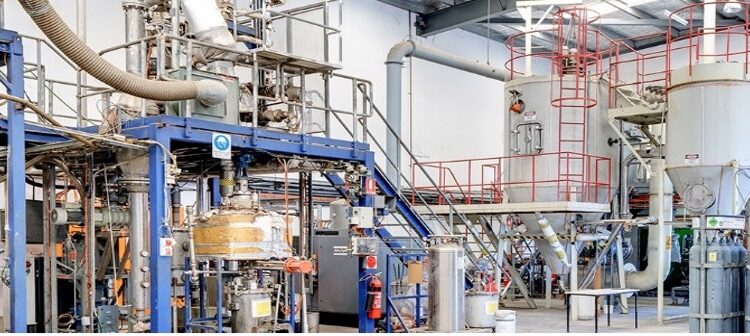Lithium Australia (ASX:LIT) subsidiary VSPC Ltd has been granted an Australian patent for the production of nickel- and cobalt-free battery cathode powders.
VSPC’s intellectual property portfolio includes patents covering how its powders are made, not just what they are made of.
VSPC’s proprietary nanotechnology processes are simpler, cheaper and more energy-efficient, and deliver products more consistent in quality, than those of its competitors, meaning VSPC is well-positioned to cater for forecast growth in the rapidly expanding global market for phosphate-based battery cathode materials, lithium ferro phosphate in particular.
VSPC has spent 20 years researching and developing its nanotechnology processes and the past 14 years on applying those processes to next-generation cathode materials for lithiumion batteries (LIBs).
The Commissioner of Patents has granted Patent Number 2020203801, with an earliest priority date of 2020-06-09, for the VSPC process entitled ‘Method for making lithium metal phosphates’. The patent, which will provide VSPC with 20 years of intellectual property (IP) protection in Australia, is the first step in VSPC’s quest for worldwide patent protection of this IP.
Over the past two years VSPC has simplified and adapted certain elements of its proprietary nanotechnology, to enable its use of a broader range of raw materials. This led VSPC to develop a process that includes novel and inventive steps, and hence to granting of this patent. L
ithium ferro phosphate (LFP) and lithium manganese iron phosphate (LMFP) are both phosphate-based cathode active materials that can be manufactured using VSPC’s recently patented process, which provides potential for significant reductions in production cost.
Benefits of phosphate-based cathode materials LFP and LMFP cathode powders outperform nickel-based battery cathode materials in terms of safety, production cost and chemical stability and offer a longer service life.
In terms of resource utilisation too, LFP and LMFP could result in greater supply chain sustainability, in that both use 20% less lithium than nickel-based cathode alternatives per kWh (kilowatt hour) of storage capacity, are produced using widely available iron and phosphate raw materials, and contain no nickel or cobalt, thereby reducing dependence on critical metals already in short supply and vulnerable to supply disruption, as well as volatile pricing.
LFP and LMFP, then, share the same advantages, with the difference that LMFP also offers greater energy density; in terms of its use in electric vehicle battery packs, this could equate not just to greater safety and longer life, as with LFP, but also greater power output and therefore greater range. With respect to chemical and physical properties and electrical performance, VSPC’s LFP and LMFP are on a par with, or exceed, those of leading suppliers of such products, which has been verified through independent testing.
Lithium Australia MD, Adrian Griffin, said that iven the benefits of its proprietary technology, VSPC is well-positioned to take advantage of what is forecast to be remarkable growth in the already rapidly expanding market for LFP-type powders. Indeed, global markets for LFP are forecast to grow fivefold over the next 10 years.
“The grant of a patent for this most recent process enhances VSPC’s application of previously granted intellectual property to specific types of cathode powders,” Mr Griffin said.
“Initial patents, which covered VSPC’s ability to create very small particles, have since been applied to the fastest growing sector of the battery industry – LFP-type LIBs. “Lithium Australia is a world leader in this technology and is seeking partners to establish commercial production facilities.”
For further information please visit: https://lithium-au.com/












